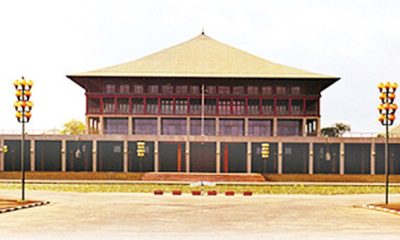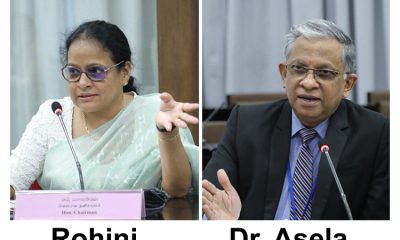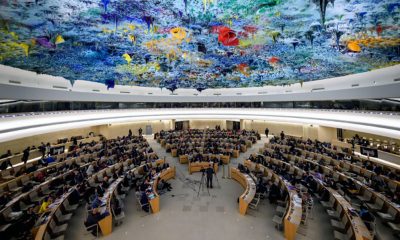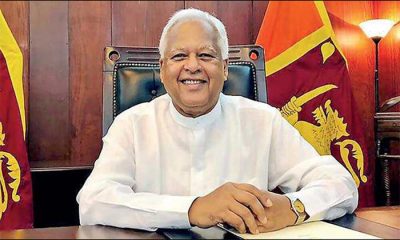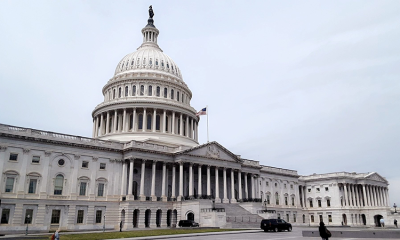Features
JRJ begins to lose control, gets me back to Colombo and some inside stories of the day
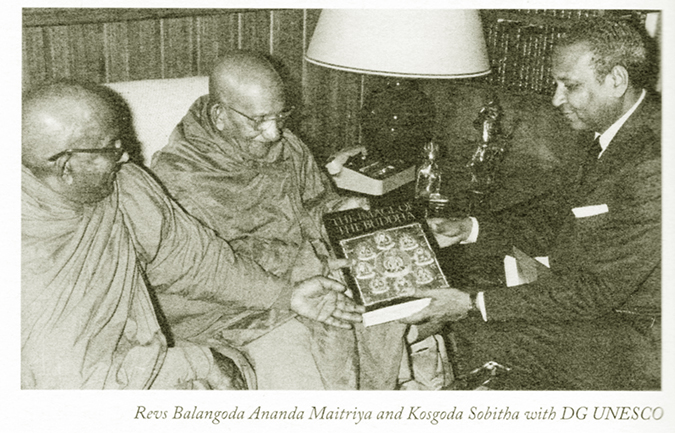
(Excerpted from volume ii of the Sarath Amunugama autobiography)
This was about the nadir of JRJ’s administration. He was beginning to lose control. On one side the JVP which was sent underground by his fiat, realized that the parliamentary road was not immediately open to them. Wijeweera is reputed to have said that it would take the JVP 50 years to win a popular election. Unlike in 1971 they succeeded in unleashing a reign of terror after the signing of the Indo-Lanka accord which paralyzed the country.
JRJ could not fight on two fronts – the north and south – which Premadasa compared to a fire at both ends of a `flambeau’ [Vilakku] used in Sinhala healing rituals. The northern situation was reaching a stalemate since India was exerting strong diplomatic pressure which crippled the efforts of the armed forces. When the army under Lalith Athulathmudali had the LTTE encircled in Vadamaradchi, they were forced to call off the assault by the President.
The LTTE was armed and trained by Indian irregulars. The West that JRJ turned to had comforting words but was not willing to take India to task. The socialist block saw no reason to come to the aid of a leader who claimed to ‘roll back socialism’. It was in those bleak circumstances for JRJ that Indira Gandhi was killed by her Sikh bodyguard, which led to another twist in the fate of the Sri Lankan government.
In Paris we were glued to our TV sets as pictures from the funeral ceremony of Indira in Delhi were beamed on ‘real time’ to our drawing rooms. The nation was in shock and the vast concourse that assembled in ‘Shand Vana’ saw Rajiv Gandhi not only taking the leading role in the ceremony but being positioned by the power brokers of the Congress to succeed his mother, even though he was initially uncertain.
But if the power brokers thought they could continue with business as usual, they were mistaken. After a short while a new generation of tech savvy advisors came to the fore. Businessmen like Tatas, of Parsee origins like the new Prime Minister, replaced the Gujeratis like the Ambanis and a new pro-West shift replaced Indira’s ingrained hostility to the West, which was also a contributory factor for her jaundiced view of JRJ and his government.
In Tamil Nadu affairs Parathasarathy as advisor was replaced by Romesh Bandari. I felt this immediately in Paris as GP lost his clout and was replaced as head of the Indian delegation by Foreign Service officers like Dixit and Kaul. Gamini Dissanayake, who was backed strongly by the Maharaja Group, now entered the scene in a big way because as the head of the Board of Control of Cricket he could interact freely with the Indian elite who were cricket fanatics.
At that time we were knocking on the door to be recognized for test cricket and Gamini with his charm and ample financial backing, was determined to gain entry. The key to unlocking this conundrum was Indian support and that was obtained by Gamini with his customary flair. A favourable factor, which can be now disclosed, was Gamini’s links with the Balfour Beatty company, a British giant which was the contractor for the Victoria Reservoir project. This company threw its weight behind our application.
The Head of the company in the UK was the chief fund raiser for Thatcher’s Conservative Party. Gamini used the clout of Balfour — Beatty to twist the arm of the MCC. I once went with Gamini and High Commissioner Monerawela to view an early match between England and Sri Lanka at Lords. We were welcomed to the distinguished visitors’ gallery and served champagne and wafer thin smoked salmon as well as cucumber sandwiches ordered from Fortnum and Mason. By that time Sri Lanka was in the select group with test status and in that match Wettimuny, if my memory serves, scored a century.
Another of Gamin’s `coup’s was to get Sir Garfield Sobers as a coach. He was at the height of his fame and his involvement was a great inspiration for our boys. Arjuna Ranatunga who is a fearless leader, brought the World cup won by our team straight from the airport to Gamini’s house and presented it to Srima in gratitude for her husband’s superb contribution, even though Gamini was dead by then and his rival Chandrika was President. It stands to Chandrika’s credit that she took this act of grace with dignity.
Cricket brought Gamini into contact with Ram of the Hindu newspaper group and they became firm friends. I can attest to this since I too was brought into the circle of Ram’s friends. When Gamini was killed, Ram flew down from Chennai for the funeral and I took him in my car to the cremation ground. An aside I can reveal that Ram gifted high class Labrador to both Gamini and Chandrika. Though they were rivals the Presidency their favourite dogs came from the same source.
Chandrika’s dog was well known when she was President pet would follow her everywhere and was a signal that CBK was near. Chandrika was congenitally late and we would anxiously await the entry of the dog, particularly at Cabinet meetings, we could prepare ourselves for the discussion as soon as the four-footed herald ambled in and curled itself under the President’s chair. It was the custom for us to get up when the President entered the room. However, one lady minister known for sycophancy would shoot up as soon as she saw the dog much to our amusement. When Chandrika left office this minister was the first to abandon her heroine and literally fall at the feet of Mahinda Rajapakse.
Unexpected deaths
By the end of 1985 our group of friends in Paris had to two shocks. They were the unexpected deaths of Sarath Muttetuwegama and Esmond Wickremesinghe. Both were close to me and had stayed with us in Paris and the news their deaths was extremely disturbing. Sarath M. who was longtime friend and relative, had lived with his family on Siripa road just a few houses away from ours. His children – Ramani and Maitri – and ours were the closest of friends and were in and am of our respective homes.
On our invitation the Muttetuwegama children spent their long vacation with us visiting the tourist sites in France. They flew to Paris via Moscow by Aeroflot and their-return journey to Colombo, again through Moscow, led is a hilarious misunderstanding by the USSR officials. In typical bureaucratic style information had been conveyed by the Russian embassy in Colombo that Mr. and Mrs. Muttetuwegama were in transit. Officials had prepared a warm welcome to the rising star of the Ceylon Communist Party and his wife.
Imagine their surprise when two kids came down the gangway answering to the name of Muttetuwegama. To make matters worse young Maithri Muttetuwegama was waving the cowboy hat I had bought for him in Paris. I was told that the officials, loath to admit their error, had wined and dined the two children not forgetting to propose several toasts with good wishes for Sri Lanka-USSR friendship. Not long after, Sarath was killed in a road accident in Ratnapura and we lost a brilliant and incorruptible politician. His role as a brave Opposition Parliamentarian in the era of JRJ, as the lone Marxist voice, has entered the stuff of legend and is a lesson to all young politicians of today.
Esmond’s death was equally shocking. We had looked forward to his regular visits to Paris and the inside information about Sri Lankan politics that he freely provided. He was always conscious of his family’s proclivity to heart disease. His father and two younger brothers, Tissa and Lakshman, had died at a comparatively young age. In typical style he had studied the literature on heart disease, consulted his physician Dr. Thenuwara and selected Dr. de Bakey of Houston, who was the world’s best known heart surgeon, to perform a surgical procedure on him. On his way to Texas, he stayed with us in Rue Jean Daudin and a few of us took him to the airport for his flight to the US. He was in the best of spirits, and we knew that he was very keen to regain his vitality and get back to Colombo to resume his backroom involvement as JRJ’s chief political advisor and hatchet man.
Unfortunately, everything started going wrong in the US. De Bakey was planning to leave on a holiday and was ready to operate immediately without regard to an old man’s-tired condition after coming halfway across the world. By the time Esmond began to come to after his operation De Bakey had left on his holiday. When his kidneys began to fail there were no kidney specialists on call. Dr. Thenuwara was at his wits end but there was nothing he could do. Esmond held on for a few days.
Ranil managed to reach his father’s bedside after a marathon flight but Esmond breathed his last not long after. We were saddened by this misadventure, which in our estimation, could have been avoided had he sought treatment in an Asian hospital. Manu, Premachandra and I and several of the embassy minor staff organized a ‘dane’ in his memory at the Paris Vihara and I conveyed our condolences to Ranil when I met him at his home sometime later.
While these deaths cast a pall of sorrow on our group in Paris, the news from Sri Lanka was equally bad. The ethnic conflict had now transformed itself into a shooting war. Whenever I met my friends Gamini Dissanayake, and Wickreme Weerasooria I was told that in addition to the military debacles we were also losing the media war. As the Biafra and Belfast insurrections showed, the media could be manipulated by rebels to portray state forces as merciless killers – particularly child killers – and occupy moral high ground in the face of international opinion. In fact the Biafran war drew attention to the role of western advertising agencies who launched expensive global media campaigns to gain political support and funds for their rebel clients.
Today it is axiomatic that anti-state fighters need to use propaganda as much as guns in their battles, The LTTE with its tentacles in the Tamil diaspora and assiduous wooing of western journalists was winning the propaganda war. The Government information apparatus and the Foreign Service were no match for the fanatical LTTE propagandists, many of them having personal knowledge of the terror of July 1983.
Anandatissa de Alwis the Minister of Information, was ill and beset with family problems. He was also demoralized by what he perceived as JRJ’s unwillingness to recreate what had earlier been a ‘special relationship’ between the two of them.
Time had passed and new aspirants to leadership like Gamini and Lalith had overtaken him. In the Ministry, my batchmate in the CCS, Buddhin Gunatunga, who was my dear friend, was the Permanent Secretary. He was a laid-back bureaucrat who was not particularly interested in media affairs.
The Ministry had yet to play a positive role in the ethnic crisis. Buddhin may not have been in the best of health either as he was to die a few years later. In this background the President wanted me to come back and help him in the field of information at this crucial juncture. He wrote the following letter to M’Bow the DG of UNESCO and my employer in Paris on April 22, 1986.
“I am writing this letter to you to seek your assistance in a matter of considerable importance to Sri Lanka. As you may perhaps be aware, we have had to face many difficulties in the last few years due to terrorist activities in certain parts of the country.
My government has tried its utmost to find ways of settling this issue through negotiation with the different groups involved. It is clear to me that in order to assist this process of negotiation and conciliation it is necessary to inform the public both of my country and abroad of the issues involved and to create an environment conducive to a peaceful settlement. For this purpose, I intend to reorganize the information services of Sri Lanka in the near future.
“I will be greatly assisted in this task if I could obtain the services of Mr. Sarath Amunugama, Director of the International Programme for the Development of Communication of UNESCO, for a period of six months beginning June 1986. Prior to his joining UNESCO Mr. Amunugama was the Secretary to the Ministry of State which is responsible for Information and Broadcasting. He has established good working relations with the local and foreign media which can play a very important role in the present context of Sri Lanka. I sincerely hope it would be possible for you to release Mr. Amunugama for the period requested by me”.
M’Bow had extended my tenure for another four years in a letter dated August 11, 1986, which thanked me for my services and looked forward to a continuing association. I had only to respond positively to carry on in Paris with an enhanced salary. My two children were well settled in University and the overseas British school respectively. My wife was keen to continue in Paris where the family would be together and enjoy all the creature comforts.
On the other hand if I continued in Paris I would have ended up as a permanent resident in a foreign land. All my friends who remained behind were reconciled to their children marrying locals and settling down to a life in France. As parents they did not come back home after retirement or came back much later in time in their lives when they were ill or infirm. I was averse to the idea of coming back only to die in my motherland as some of my colleagues had done.
M’Bow helped me defer taking a decision when he responding to JRJ’s letter gave me a month’s paid leave to get back to Sri Lanka. This was a great gesture since the preparatory work for the annual General Meeting of IPDC had begun and my input was necessary at that juncture. I thought that a month-long visit to Sri Lanka would help me to clarify my situation and chart my future course of action. I made ready to leave for Colombo.
Rajiv and Romesh Bhandari
The death of Indira Gandhi and the succession of her son Rajiv as PM of India brought about a sea change in India’s approach towards the Sikhs as well as the Tamils in Sri Lanka. Most of the Tamilian officials principally Parathsarathy and Venketeshwaran were moved out and his personal loyalists like Romesh Bhandari, Chidambaram and Ram became his advisors on the Sri Lanka issue. Having won the Parliamentary election following Indira’s death, with an unprecedented majority, Rajiv had the freedom to change policies as well as infuse a sense of urgency in foreign -Affairs.
He was not dependent on the Tamil vote in the Lok Sabha. His tilt towards an open economy and closer relations with the west, a departure from his mother’s outdated socialism, summarized in her slogan ‘Garibi Hatao’ [Abolish Poverty], which proved to be a failure, made him a favourite of western governments and the media. I was in Paris when he made a successful state visit to France. Its high point was the pouring of Ganges water Rajiv had brought with him, into the Seine highlighting the confluence of their cultures and aspirations.
But what most impressed the Europeans was the shifting of arms procurement from the Russian arsenal to French, Italian and Swedish products. Thus French attack airplanes like the Dassault and long range guns from Bofors of Sweden entered the weaponry of the burgeoning Indian armed forces. This led to much criticism from the left leaning politicians and media practitioners who were constantly harping on the Italian birth nationality of Sonia, the PM’s assertive wife. They launched an attack on Rajiv’s purchase of modern long range guns from Bofors but could not deflect him from following modern economic policies.
This shift helped Rajiv to get western support for his initiatives in both Punjab and Sri Lanka. After the bloodbath of Sikhs living outside the Punjab following Indira’s assassination, a compromise was worked out and the Khalistan issue was laid to rest, at least for a long time. Rajiv then turned to the Sri Lanka issue with the same philosophy of cooperation, maximum devolution and a good neighbour policy. This approach held much promise and all in India and Sri Lanka were enthusiastic about giving it a chance.
His point man in this effort was Romesh Bhandari, a senior Foreign Service officer who was an amiable person unlike the dour Tamils who were Indira’s advisors. Accordingly, both Rajiv and his Foreign Secretary struck up a cordial relationship with JRJ. Rajiv called JRJ ‘uncle’ and I was aware that our wily leader reminisced about his friendship with the PM’s grandfather Nehru and his experiences with the Congress leaders of his youth when he participated in the Ramgarh Congress meeting prior to independence.
JRJ referred to his correspondence with Nehru is the pre-Independence period. At my urging he wrote an article about his links with the Congress leaders of that time. He wanted it published in India. I contacted my friend Dilip Padgoankar who was an advisor to the Jain family, the owners of the Times of India group of newspapers. Later Dilip became the Editor of the Times of India. We decided that the article should be published in the Illustrated Weekly of India which also was owned by the Jain group.
The article was published by the magazines editor Rafik Zakaria. This magazine was very popular among top elite and we were able to position JRJ as ‘a lover of India’ in the context of much anti Sri Lanka feeling generated during the time of Indira Gandhi. The fly in the ointment was Zakaria’s unhelpful headline which read “An Old Fox Remembers”.
I spent quite some time in brushing up JRJ’s image prior to the SAARC meeting to be held in Bangalore in November 1986. At this meeting the two leaders were to discuss the ethnic issue on the sidelines of the meeting which according to its mandate did not formally discuss bilateral matters. In consultation with JRJ, I decided that we should make a special media effort to woo Rajiv. I also, in discussion with my friend Gamini Dissanayake on whom JRJ was depending more on and more to handle the ethnic issue, decided to come back to my home country and assist him and JRJ in a more sustained manner. Accordingly, I terminated my employment with UNESCO with the following letter to M’Bow:
“I thank you for your letter in which you kindly inform me of your decision to extend the engagement of my services to UNESCO. I would have been very happy to accept but the President of Sri Lanka has requested me to return so that he could make use of my services in a very crucial area of his Government. In these circumstances I have decided, reluctantly, that I will not seek an extension of my contract. May I thank you most sincerely for the courtesy, understanding and friendship you have extended to me during my tenure of office. I look forward to working closely with you in the future.”
Features
The heart-friendly health minister

by Dr Gotabhya Ranasinghe
Senior Consultant Cardiologist
National Hospital Sri Lanka
When we sought a meeting with Hon Dr. Ramesh Pathirana, Minister of Health, he graciously cleared his busy schedule to accommodate us. Renowned for his attentive listening and deep understanding, Minister Pathirana is dedicated to advancing the health sector. His openness and transparency exemplify the qualities of an exemplary politician and minister.
Dr. Palitha Mahipala, the current Health Secretary, demonstrates both commendable enthusiasm and unwavering support. This combination of attributes makes him a highly compatible colleague for the esteemed Minister of Health.
Our discussion centered on a project that has been in the works for the past 30 years, one that no other minister had managed to advance.
Minister Pathirana, however, recognized the project’s significance and its potential to revolutionize care for heart patients.
The project involves the construction of a state-of-the-art facility at the premises of the National Hospital Colombo. The project’s location within the premises of the National Hospital underscores its importance and relevance to the healthcare infrastructure of the nation.
This facility will include a cardiology building and a tertiary care center, equipped with the latest technology to handle and treat all types of heart-related conditions and surgeries.
Securing funding was a major milestone for this initiative. Minister Pathirana successfully obtained approval for a $40 billion loan from the Asian Development Bank. With the funding in place, the foundation stone is scheduled to be laid in September this year, and construction will begin in January 2025.
This project guarantees a consistent and uninterrupted supply of stents and related medications for heart patients. As a result, patients will have timely access to essential medical supplies during their treatment and recovery. By securing these critical resources, the project aims to enhance patient outcomes, minimize treatment delays, and maintain the highest standards of cardiac care.
Upon its fruition, this monumental building will serve as a beacon of hope and healing, symbolizing the unwavering dedication to improving patient outcomes and fostering a healthier society.We anticipate a future marked by significant progress and positive outcomes in Sri Lanka’s cardiovascular treatment landscape within the foreseeable timeframe.
Features
A LOVING TRIBUTE TO JESUIT FR. ALOYSIUS PIERIS ON HIS 90th BIRTHDAY

by Fr. Emmanuel Fernando, OMI
Jesuit Fr. Aloysius Pieris (affectionately called Fr. Aloy) celebrated his 90th birthday on April 9, 2024 and I, as the editor of our Oblate Journal, THE MISSIONARY OBLATE had gone to press by that time. Immediately I decided to publish an article, appreciating the untiring selfless services he continues to offer for inter-Faith dialogue, the renewal of the Catholic Church, his concern for the poor and the suffering Sri Lankan masses and to me, the present writer.
It was in 1988, when I was appointed Director of the Oblate Scholastics at Ampitiya by the then Oblate Provincial Fr. Anselm Silva, that I came to know Fr. Aloy more closely. Knowing well his expertise in matters spiritual, theological, Indological and pastoral, and with the collaborative spirit of my companion-formators, our Oblate Scholastics were sent to Tulana, the Research and Encounter Centre, Kelaniya, of which he is the Founder-Director, for ‘exposure-programmes’ on matters spiritual, biblical, theological and pastoral. Some of these dimensions according to my view and that of my companion-formators, were not available at the National Seminary, Ampitiya.
Ever since that time, our Oblate formators/ accompaniers at the Oblate Scholasticate, Ampitiya , have continued to send our Oblate Scholastics to Tulana Centre for deepening their insights and convictions regarding matters needed to serve the people in today’s context. Fr. Aloy also had tried very enthusiastically with the Oblate team headed by Frs. Oswald Firth and Clement Waidyasekara to begin a Theologate, directed by the Religious Congregations in Sri Lanka, for the contextual formation/ accompaniment of their members. It should very well be a desired goal of the Leaders / Provincials of the Religious Congregations.
Besides being a formator/accompanier at the Oblate Scholasticate, I was entrusted also with the task of editing and publishing our Oblate journal, ‘The Missionary Oblate’. To maintain the quality of the journal I continue to depend on Fr. Aloy for his thought-provoking and stimulating articles on Biblical Spirituality, Biblical Theology and Ecclesiology. I am very grateful to him for his generous assistance. Of late, his writings on renewal of the Church, initiated by Pope St. John XX111 and continued by Pope Francis through the Synodal path, published in our Oblate journal, enable our readers to focus their attention also on the needed renewal in the Catholic Church in Sri Lanka. Fr. Aloy appreciated very much the Synodal path adopted by the Jesuit Pope Francis for the renewal of the Church, rooted very much on prayerful discernment. In my Religious and presbyteral life, Fr.Aloy continues to be my spiritual animator / guide and ongoing formator / acccompanier.
Fr. Aloysius Pieris, BA Hons (Lond), LPh (SHC, India), STL (PFT, Naples), PhD (SLU/VC), ThD (Tilburg), D.Ltt (KU), has been one of the eminent Asian theologians well recognized internationally and one who has lectured and held visiting chairs in many universities both in the West and in the East. Many members of Religious Congregations from Asian countries have benefited from his lectures and guidance in the East Asian Pastoral Institute (EAPI) in Manila, Philippines. He had been a Theologian consulted by the Federation of Asian Bishops’ Conferences for many years. During his professorship at the Gregorian University in Rome, he was called to be a member of a special group of advisers on other religions consulted by Pope Paul VI.
Fr. Aloy is the author of more than 30 books and well over 500 Research Papers. Some of his books and articles have been translated and published in several countries. Among those books, one can find the following: 1) The Genesis of an Asian Theology of Liberation (An Autobiographical Excursus on the Art of Theologising in Asia, 2) An Asian Theology of Liberation, 3) Providential Timeliness of Vatican 11 (a long-overdue halt to a scandalous millennium, 4) Give Vatican 11 a chance, 5) Leadership in the Church, 6) Relishing our faith in working for justice (Themes for study and discussion), 7) A Message meant mainly, not exclusively for Jesuits (Background information necessary for helping Francis renew the Church), 8) Lent in Lanka (Reflections and Resolutions, 9) Love meets wisdom (A Christian Experience of Buddhism, 10) Fire and Water 11) God’s Reign for God’s poor, 12) Our Unhiddden Agenda (How we Jesuits work, pray and form our men). He is also the Editor of two journals, Vagdevi, Journal of Religious Reflection and Dialogue, New Series.
Fr. Aloy has a BA in Pali and Sanskrit from the University of London and a Ph.D in Buddhist Philosophy from the University of Sri Lankan, Vidyodaya Campus. On Nov. 23, 2019, he was awarded the prestigious honorary Doctorate of Literature (D.Litt) by the Chancellor of the University of Kelaniya, the Most Venerable Welamitiyawe Dharmakirthi Sri Kusala Dhamma Thera.
Fr. Aloy continues to be a promoter of Gospel values and virtues. Justice as a constitutive dimension of love and social concern for the downtrodden masses are very much noted in his life and work. He had very much appreciated the commitment of the late Fr. Joseph (Joe) Fernando, the National Director of the Social and Economic Centre (SEDEC) for the poor.
In Sri Lanka, a few religious Congregations – the Good Shepherd Sisters, the Christian Brothers, the Marist Brothers and the Oblates – have invited him to animate their members especially during their Provincial Congresses, Chapters and International Conferences. The mainline Christian Churches also have sought his advice and followed his seminars. I, for one, regret very much, that the Sri Lankan authorities of the Catholic Church –today’s Hierarchy—- have not sought Fr.
Aloy’s expertise for the renewal of the Catholic Church in Sri Lanka and thus have not benefited from the immense store of wisdom and insight that he can offer to our local Church while the Sri Lankan bishops who governed the Catholic church in the immediate aftermath of the Second Vatican Council (Edmund Fernando OMI, Anthony de Saram, Leo Nanayakkara OSB, Frank Marcus Fernando, Paul Perera,) visited him and consulted him on many matters. Among the Tamil Bishops, Bishop Rayappu Joseph was keeping close contact with him and Bishop J. Deogupillai hosted him and his team visiting him after the horrible Black July massacre of Tamils.
Features
A fairy tale, success or debacle

Sri Lanka-Singapore Free Trade Agreement
By Gomi Senadhira
senadhiragomi@gmail.com
“You might tell fairy tales, but the progress of a country cannot be achieved through such narratives. A country cannot be developed by making false promises. The country moved backward because of the electoral promises made by political parties throughout time. We have witnessed that the ultimate result of this is the country becoming bankrupt. Unfortunately, many segments of the population have not come to realize this yet.” – President Ranil Wickremesinghe, 2024 Budget speech
Any Sri Lankan would agree with the above words of President Wickremesinghe on the false promises our politicians and officials make and the fairy tales they narrate which bankrupted this country. So, to understand this, let’s look at one such fairy tale with lots of false promises; Ranil Wickremesinghe’s greatest achievement in the area of international trade and investment promotion during the Yahapalana period, Sri Lanka-Singapore Free Trade Agreement (SLSFTA).
It is appropriate and timely to do it now as Finance Minister Wickremesinghe has just presented to parliament a bill on the National Policy on Economic Transformation which includes the establishment of an Office for International Trade and the Sri Lanka Institute of Economics and International Trade.
Was SLSFTA a “Cleverly negotiated Free Trade Agreement” as stated by the (former) Minister of Development Strategies and International Trade Malik Samarawickrama during the Parliamentary Debate on the SLSFTA in July 2018, or a colossal blunder covered up with lies, false promises, and fairy tales? After SLSFTA was signed there were a number of fairy tales published on this agreement by the Ministry of Development Strategies and International, Institute of Policy Studies, and others.
However, for this article, I would like to limit my comments to the speech by Minister Samarawickrama during the Parliamentary Debate, and the two most important areas in the agreement which were covered up with lies, fairy tales, and false promises, namely: revenue loss for Sri Lanka and Investment from Singapore. On the other important area, “Waste products dumping” I do not want to comment here as I have written extensively on the issue.
1. The revenue loss
During the Parliamentary Debate in July 2018, Minister Samarawickrama stated “…. let me reiterate that this FTA with Singapore has been very cleverly negotiated by us…. The liberalisation programme under this FTA has been carefully designed to have the least impact on domestic industry and revenue collection. We have included all revenue sensitive items in the negative list of items which will not be subject to removal of tariff. Therefore, 97.8% revenue from Customs duty is protected. Our tariff liberalisation will take place over a period of 12-15 years! In fact, the revenue earned through tariffs on goods imported from Singapore last year was Rs. 35 billion.
The revenue loss for over the next 15 years due to the FTA is only Rs. 733 million– which when annualised, on average, is just Rs. 51 million. That is just 0.14% per year! So anyone who claims the Singapore FTA causes revenue loss to the Government cannot do basic arithmetic! Mr. Speaker, in conclusion, I call on my fellow members of this House – don’t mislead the public with baseless criticism that is not grounded in facts. Don’t look at petty politics and use these issues for your own political survival.”
I was surprised to read the minister’s speech because an article published in January 2018 in “The Straits Times“, based on information released by the Singaporean Negotiators stated, “…. With the FTA, tariff savings for Singapore exports are estimated to hit $10 million annually“.
As the annual tariff savings (that is the revenue loss for Sri Lanka) calculated by the Singaporean Negotiators, Singaporean $ 10 million (Sri Lankan rupees 1,200 million in 2018) was way above the rupees’ 733 million revenue loss for 15 years estimated by the Sri Lankan negotiators, it was clear to any observer that one of the parties to the agreement had not done the basic arithmetic!
Six years later, according to a report published by “The Morning” newspaper, speaking at the Committee on Public Finance (COPF) on 7th May 2024, Mr Samarawickrama’s chief trade negotiator K.J. Weerasinghehad had admitted “…. that forecasted revenue loss for the Government of Sri Lanka through the Singapore FTA is Rs. 450 million in 2023 and Rs. 1.3 billion in 2024.”
If these numbers are correct, as tariff liberalisation under the SLSFTA has just started, we will pass Rs 2 billion very soon. Then, the question is how Sri Lanka’s trade negotiators made such a colossal blunder. Didn’t they do their basic arithmetic? If they didn’t know how to do basic arithmetic they should have at least done their basic readings. For example, the headline of the article published in The Straits Times in January 2018 was “Singapore, Sri Lanka sign FTA, annual savings of $10m expected”.
Anyway, as Sri Lanka’s chief negotiator reiterated at the COPF meeting that “…. since 99% of the tariffs in Singapore have zero rates of duty, Sri Lanka has agreed on 80% tariff liberalisation over a period of 15 years while expecting Singapore investments to address the imbalance in trade,” let’s turn towards investment.
Investment from Singapore
In July 2018, speaking during the Parliamentary Debate on the FTA this is what Minister Malik Samarawickrama stated on investment from Singapore, “Already, thanks to this FTA, in just the past two-and-a-half months since the agreement came into effect we have received a proposal from Singapore for investment amounting to $ 14.8 billion in an oil refinery for export of petroleum products. In addition, we have proposals for a steel manufacturing plant for exports ($ 1 billion investment), flour milling plant ($ 50 million), sugar refinery ($ 200 million). This adds up to more than $ 16.05 billion in the pipeline on these projects alone.
And all of these projects will create thousands of more jobs for our people. In principle approval has already been granted by the BOI and the investors are awaiting the release of land the environmental approvals to commence the project.
I request the Opposition and those with vested interests to change their narrow-minded thinking and join us to develop our country. We must always look at what is best for the whole community, not just the few who may oppose. We owe it to our people to courageously take decisions that will change their lives for the better.”
According to the media report I quoted earlier, speaking at the Committee on Public Finance (COPF) Chief Negotiator Weerasinghe has admitted that Sri Lanka was not happy with overall Singapore investments that have come in the past few years in return for the trade liberalisation under the Singapore-Sri Lanka Free Trade Agreement. He has added that between 2021 and 2023 the total investment from Singapore had been around $162 million!
What happened to those projects worth $16 billion negotiated, thanks to the SLSFTA, in just the two-and-a-half months after the agreement came into effect and approved by the BOI? I do not know about the steel manufacturing plant for exports ($ 1 billion investment), flour milling plant ($ 50 million) and sugar refinery ($ 200 million).
However, story of the multibillion-dollar investment in the Petroleum Refinery unfolded in a manner that would qualify it as the best fairy tale with false promises presented by our politicians and the officials, prior to 2019 elections.
Though many Sri Lankans got to know, through the media which repeatedly highlighted a plethora of issues surrounding the project and the questionable credentials of the Singaporean investor, the construction work on the Mirrijiwela Oil Refinery along with the cement factory began on the24th of March 2019 with a bang and Minister Ranil Wickremesinghe and his ministers along with the foreign and local dignitaries laid the foundation stones.
That was few months before the 2019 Presidential elections. Inaugurating the construction work Prime Minister Ranil Wickremesinghe said the projects will create thousands of job opportunities in the area and surrounding districts.
The oil refinery, which was to be built over 200 acres of land, with the capacity to refine 200,000 barrels of crude oil per day, was to generate US$7 billion of exports and create 1,500 direct and 3,000 indirect jobs. The construction of the refinery was to be completed in 44 months. Four years later, in August 2023 the Cabinet of Ministers approved the proposal presented by President Ranil Wickremesinghe to cancel the agreement with the investors of the refinery as the project has not been implemented! Can they explain to the country how much money was wasted to produce that fairy tale?
It is obvious that the President, ministers, and officials had made huge blunders and had deliberately misled the public and the parliament on the revenue loss and potential investment from SLSFTA with fairy tales and false promises.
As the president himself said, a country cannot be developed by making false promises or with fairy tales and these false promises and fairy tales had bankrupted the country. “Unfortunately, many segments of the population have not come to realize this yet”.
(The writer, a specialist and an activist on trade and development issues . )


